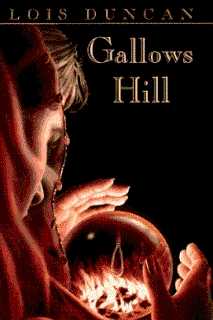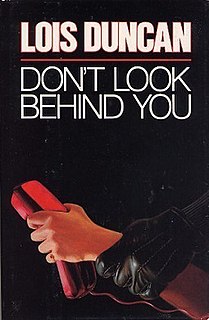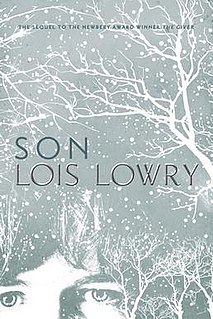
Judith Blume is an American writer of children's, young adult and adult fiction. Blume began writing in 1959 and has published more than 25 novels since then. Some of her best known works are Are You There God? It's Me, Margaret. (1970), Tales of a Fourth Grade Nothing (1972), Deenie (1973), and Blubber (1974). Blume's books have significantly contributed to children's and young adult literature.

Lois McMaster Bujold is an American speculative fiction writer. She is one of the most acclaimed writers in her field, having won the Hugo Award for best novel four times, matching Robert A. Heinlein's record. Her novella "The Mountains of Mourning" won both the Hugo Award and Nebula Award. In the fantasy genre, The Curse of Chalion won the Mythopoeic Award for Adult Literature and was nominated for the 2002 World Fantasy Award for best novel, and both her fourth Hugo Award and second Nebula Award were for Paladin of Souls. In 2011 she was awarded the Skylark Award. In 2013 she was awarded the Forry Award for Lifetime Achievement, named for Forrest J. Ackerman, by the Los Angeles Science Fantasy Society. She has won two Hugo Awards for Best Series, in 2017 for the Vorkosigan Saga and in 2018 for the World of the Five Gods series. The Science Fiction Writers of America named her its 36th SFWA Grand Master in 2019.

The Giver is a 1993 American young adult dystopian novel written by Lois Lowry. It is set in a society which at first appears to be utopian but is revealed to be dystopian as the story progresses. The novel follows a 12-year-old boy named Jonas. The society has taken away pain and strife by converting to "Sameness", a plan that has also eradicated emotional depth from their lives. Jonas is selected to inherit the position of Receiver of Memory, the person who stores all the past memories of the time before Sameness, as there may be times where one must draw upon the wisdom gained from history to aid the community's decision making. Jonas struggles with concepts of all the new emotions and things introduced to him: whether they are inherently good, evil, or in between, and whether it is even possible to have one without the other. The Community lacks any color, memory, climate, or terrain, all in an effort to preserve structure, order, and a true sense of equality beyond personal individuality.

Lois Lowry is an American writer. She is the author of several books for children and young adults, including The Giver Quartet,Number the Stars, and Rabble Starkey. She is known for writing about difficult subject matters, dystopias, and complex themes in works for young audiences.

Killing Mr. Griffin is a 1978 suspense novel by Lois Duncan about a group of teenaged students at a New Mexico high school, who plan to kidnap their strict English teacher, Mr. Griffin. Duncan developed the story from the character of Mark, who is involved in the kidnapping plan and is based on the first boyfriend of Duncan's oldest daughter. Mr. Griffin was based on the personality of a teacher one of Duncan's daughters had in high school. In 2010, the novel was reissued with changes to modernize the content.

Gathering Blue is a young adult-dystopian novel written by Lois Lowry and was published on September 25, 2000. A companion book to The Giver (1993), it is set in the same future time period and universe, treats some of the same themes, and is followed by Messenger (2004) and Son (2012) in The Giver Quartet.

Lois Duncan Steinmetz, known as Lois Duncan, was an American writer, novelist, poet, and journalist. She is best known for her young-adult novels, and has been credited by historians as a pioneering figure in the development of young-adult fiction, particularly in the genres of horror, thriller, and suspense.

Looking for Alibrandi is the debut novel of Australian author Melina Marchetta, published in 1992. A film adaptation was made in 2000.

Down a Dark Hall is a 1974 young adult gothic novel by Lois Duncan. The book follows Kit Gordy, who is sent to a boarding school where only four students are admitted including herself. The students suddenly develop new talents, with Kit waking up one night playing a musical piece she has never heard. After they are told that they have been channeling the spirits of talented historical figures, Kit tries to escape the school before the bond between the spirits and the students becomes permanent.

Gallows Hill (1997) is a supernatural thriller novel for young adults by Lois Duncan. It was her first and only young adult novel written after the death of her daughter. It was written eight years after her previous young adult novel, Don't Look Behind You. It is about a girl who moves to a small town with a secret.
Gloria Whelan is an American poet, short story writer, and novelist known primarily for children's and young adult fiction. She won the annual National Book Award for Young People's Literature in 2000 for the novel Homeless Bird. She also won the 2013 Tuscany Prize for Catholic Fiction with her short story entitled What World Is This? and the work became the title for the independent publisher's 2013 collection of short stories.

I Know What You Did Last Summer is a 1973 suspense novel for young adults by Lois Duncan. A film adaptation loosely based on the novel was released in 1997.

Bella at Midnight is a fantasy novel for children by Diane Stanley. The story is based on the fairy tale Cinderella. It was first published in 2006.

Good Luck Charlie is an American sitcom that originally aired on Disney Channel from April 4, 2010, to February 16, 2014. The series' creators, Phil Baker and Drew Vaupen, wanted to create a program that would appeal to entire families, not just children. It focuses on the Duncan family of Denver as they adjust to the births of their fourth and fifth children, Charlotte "Charlie" and Toby. In each episode, Teddy Duncan adds to a video diary that contains advice for Charlie about their family and life as a teenager. Teddy tries to show Charlie what she might go through when she is older for future reference. Each video diary ends with Teddy saying the eponymous phrase, "Good luck, Charlie".

Stranger with My Face is a young adult horror novel by Lois Duncan, first published in 1981. The novel is about Laurie Stratton, who is seen by others in places she knows she could not be. She discovers that she has an identical sister named Lia who has been visiting her town using astral projection, which involves sending her soul outside her body. Laurie learns astral projection and uses it to look for her sister. During this time, Lia's spirit takes control of Laurie's body. The story describes Laurie's struggle to take back control of her body. The novel explores themes of appearance versus true self and the idea of a double, someone similar but not quite the same as someone else. Duncan got the idea for the book after hearing about the concept of astral projection, which she thought would make a great plot for a novel. In 2011, the novel was updated with text to modernize the content.

Don't Look Behind You is a 1989 young adult thriller novel by Lois Duncan. It won a number of regional awards and was adapted into a television film in 1999.

Son is the final book in The Giver Quartet by Lois Lowry. Preceded by Messenger, the third book of the series, it follows Claire, the birth mother of Gabriel, the baby seen in The Giver, the first book in the series. Claire is obsessed with finding her son.

Pictures of Hollis Woods is a 2002 young adult novel by Patricia Reilly Giff. The novel received a Newbery Honor Award in 2003. It was adapted for television in 2007.

A Gift of Magic is a 1971 novel by Lois Duncan about a grandmother who gives her grandchildren distinct gifts. Brendon is given the gift of music, Kirby is given the gift of dance, and Nancy is given the gift of magic. Nancy's gift gives her extrasensory perception (ESP), which allows her to sense events that are happening in places she is not physically present and to read other people's minds. The novel explores some of the benefits, problems and responsibilities Nancy's gift gives her.

Chapters: My Growth as a Writer is a 1982 autobiography by Lois Duncan.



















